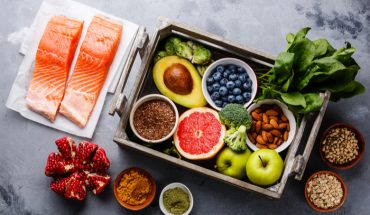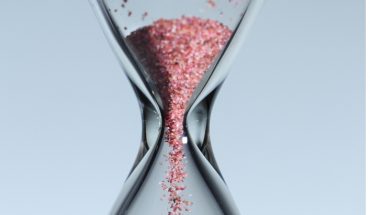They may be prickly to the touch and bitter to the taste, but cacti, and other spiky desert plants, have long been credited with many amazing healing properties.
Weight loss: Hoodia gordonii is a huge six foot high succulent which can has been hailed as Nature’s slimming aid. The plant, which is covered with spines and has huge fleshy pink flowers, has been a staple part of the Kalahari bushmen’s diet for thousands of years. Apparently, chewing on the plant helped them to stave off hunger pangs and thirst on long journeys. In 1997, a British company, Phytopharm, patented the active ingredient in hoodia, which they call P57. This is the molecule which is thought to switch off the appetite in the part of the brain called the hypothalamus. In 2001 Phytopharm completed a double-blind, placebo-controlled clinical study in overweight, but otherwise healthy volunteers using hoodia extract. The volunteers who had the extract ate less calories and slimmed down after two weeks. So far, the researchers have not found any side effects, although further studies need to be done to confirm the extract is completely safe.
Dr Daryl Rees, chief scientist at Phytopharm explains: “Eating and appetite is controlled by a complex interplay of factors, but it does look like hoodia appears to target the bit of the brain that regulates appetite.” P57 mimics the action of glucose, tricking the body’s satiety centre into thinking it is full. . Be aware that many hoodia slimming supplements contain no hoodia extract at all. It is a endangered plant which cannot be harvested from the wild. Phytopharm is the only company that grows it commercially.
Prostate problems: Prickly pear cactus, also known as opuntia, has been traditionally used by Sicilian men to ease the discomfort of an enlarged prostate gland. A study by Dr. Alexander Levine and Professor Dan Palevitch in Israel concluded that the plant extract could indeed help to relieve prostate inflammation and improve male urinary health. Analysis of the plant shows that opuntia contains two compounds known as quercetin and beta-sitosterol, which are both known to ease prostate problems. “A lot of conventional drugs do derive from plants, including cacti,” says dietician, Catherine Collins. “Local knowledge about the uses for certain plants is often the best.”
Cancer: Aloe, which is a spiky cousin of the cacti family, has many medicinal uses. Some alternative practitioners even claim that aloe can help to preventing or treating cancer. Some laboratory studies have shown that chemicals found in aloe may have beneficial effects on the immune system, but there is no evidence that it works on people. Injections of aloe vera have even been known to kill cancer patients.
The results of scientific studies are mixed. Some show that aloe reduces the growth of cancer cells, but others shows the opposite effect. “Always go and see your doctor to discuss treatment options for cancer and other non-limiting diseases,” advises Mr Perfiit of the BHMA.
Sex drive: Native American people use various types of cacti to stimulate their sex drive, but the effect is not proven. The San Pedro cactus, which grows in Mexico, is supposed to have remarkable aphrodisiac effects. Volunteers who took part in a hoodia trial in 2001 found that the extract acted as powerful aphrodisiac. Night blooming cereus, also known as Queen of the Night, is a cactus species originally from the Antilles. It is used locally as an aphrodisiac, as well as a heart stimulant.
Burns and skin conditions: The Aloe vera plant, which has thorn-edged leaves, exudes a clear gel when cut. This gel has soothing properties and can even accelerate wound healing. Dr. Ian Tizard, a professor of immunology at the College of Veterinary Medicine at Texas A&M University, believes that a special molecule inside the plant is what gives it its amazing healing powers. “When Aloe vera is placed on many types of wounds, such as bedsores, it can often heal the wound quickly, and the likely reason why is the special polysaccharide in it,” Tizard explains. A polysaccharide is a long chain molecule, which is found in many plants, but the kind in aloe vera seems to have a special effect. “It seems to bind growth factors in wounds whereas normally they would be destroyed. Aloe vera polysaccharide seems to speed along the healing process much more quickly.”
Constipation: In capsule form, aloe is used as a natural laxative. Aloe juice, concentrated and dried until it turns into a black resin, contain chemicals with laxative properties. These substances are classified as stimulant laxatives and can be irritating to the intestines. “You only need to take a little for a dramatic effect,” says Mr Perfitt. This remedy should not be taken by women who are pregnant or breast feeding and should only be a temporary measure. Side effects of the internal use of aloe may include abdominal pain, nausea and vomiting, diarrhoea, and electrolyte (chemical) imbalance in the blood, especially at high doses. Taking aloe internally may cause dangerous interactions with prescription drugs and with other herbal supplements.
Diabetes: Pricky pear cactus could help to reduce blood sugar levels and improve insulin function, according to a scientific review in the February 2005 issue of Molecular Nutrition and Food Research, A 2003 study of diabetic pigs found that the animals had reduced blood sugar levels just one hour after taking prickly pear extract. Researchers writing in the journal Phytotherapy Research concluded that a protein-like compound in the extract was probably responsible for these results.
Hangovers: An extract from a type of prickly pear cactus called opuntia ficus indica may quell some of the worst symptoms of excessive drinking, according to a US study published in The Archives of Internal Medicine. Taking a capsule of the extract the night before a binge, helped drinkers recover more quickly the morning after.Individuals who took a dietary supplement experienced less nausea, lack of appetite, headache and dry mouth after their night swigging the hard stuff. Bur researchers don’t want their discovery to encourage bingeing. “Our interest is not to eliminate the symptoms of a hangover so people can drink with impunity,” says Jeff Wiese at Tulane University, New Orleans. “The only known cure for the alcohol hangover is not to drink.”
Cholesterol lowering: Too much bad LDL cholesterol in the blood can lead to thickening of the arteries and heart disease. Prickly pear extract may help to reduce levels of bad LDL cholesterol in the body, according to More research trials sponsored by the American Heart Association. The prickly pear may help to prevent excess blood sugar from converting into fats and has an LDL-lowering effect. More research still needs to be done to prove that this is a genuine long-term effect.
Hallucinogenic: Mescaline, which is found in certain types of peyote cacti, is a psychoactive compound which has been used by religious shamens in North America for thousands of years. More recently, it was abused as a recreational drug. Lophophora williamsii is the peyote cactus which is contains the largest amount of mescaline. Ingesting these cacti is possibly interesting, but extremely hazardous.
ADVICE: Victor Perfitt, president of the British Herbal Medicine Association, says: “As with any herbal medication however, never dose yourself without taking medical advice. Many herbal medicine react with other drugs, and some are poisonous in large doses.”
- New lipid-based pathway discovered as key to memory formation - 25th June 2025
- Crucial link could explain how Alzheimer’s takes hold - 25th June 2025
- Understanding Your Mind Can Improve Daily Life - 25th June 2025







